Just weeks into its mission, the $10 billion space telescope is delivering stunning science and spectacular images.
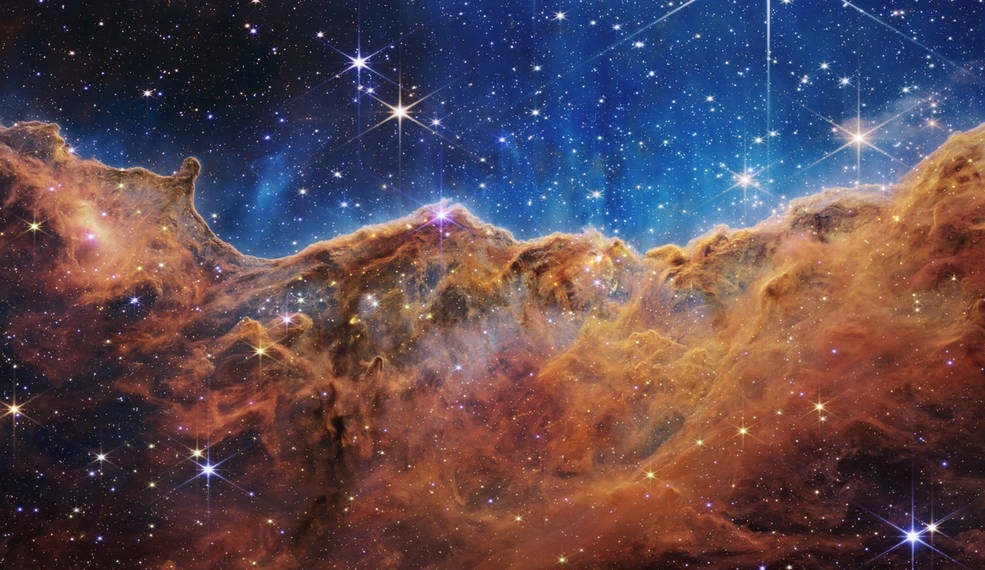
Image Credit: NASA, ESA, CSA, and STScI
Tuesday, July 12, 2022, will go down in history as a monumental day for astronomy, as it marked the release of the first images from the James Webb Space Telescope (JWST).
The telescope lived up to its promise of delivering some of the sharpest and clearest images of the cosmos ever seen. These images will spur researchers on and form the bedrock of a wealth of scientific studies over the coming months.
However, it wasn’t just scientists that were in awe of the first images delivered by Webb. Social media was flooded with posts sharing the observations of the 10 billion USD space telescope which launched on Christmas day 2021.
Many posters juxtaposed these images against pictures captured by the Hubble Space Telescope and other instruments as a way of demonstrating what a leap forward the JWST represents in astronomy.
The Early Universe
The ability to see further into the Universe also represents the ability to see further back in time. This is because light takes a finite amount of time to reach us here on Earth so we are seeing distant objects that are millions or billions of light years away as they were millions and billions of years ago.
The JWST views the Universe in infrared and this is ideal for seeing the earliest and most distant galaxies and stars. This is because as light makes its way to us from distant sources the expansion of the Universe stretches its wavelength.
As a result, visible light from objects at huge cosmic distances is stretched — or redshifted — to the infrared region of the electromagnetic spectrum. The fact that the JWST is the most powerful infrared telescope we have ever built makes it ideal to view the early Universe.
The first image released by NASA and unveiled by President Joe Biden on Monday, July 11, reflects this ability perfectly. This initial image showed the galaxy cluster SMACS 0723 and shows in sharp resolution thousands of galaxies in this cluster as they were 4.6 billion years ago.
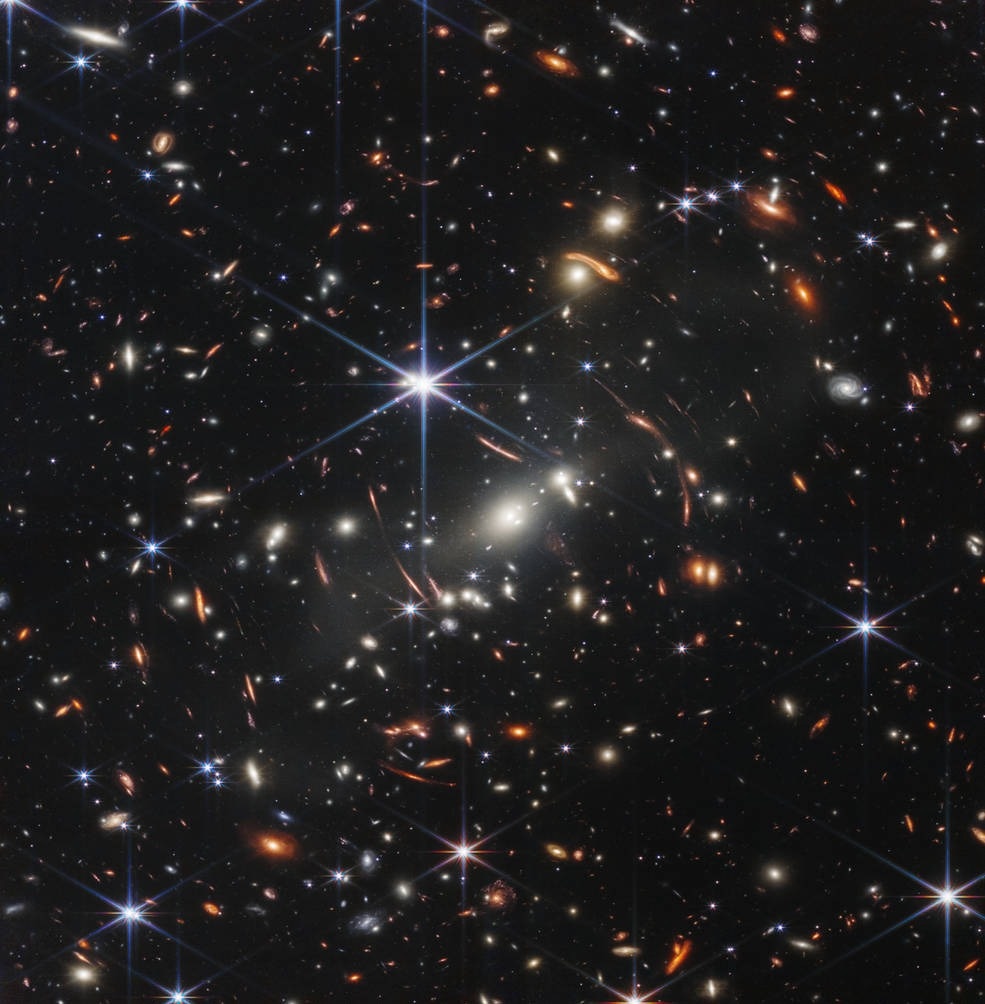
Image Credit: NASA, ESA, CSA, and STScI
The image also shows some striking examples of gravitational lensing, which occurs when an object of great mass comes between Earth and a light source and causes the light it emits to be curved, amplifying the image and distorting it.
The first Deep Field image the JWST has produced shows the faintest images ever seen in infrared and represents a patch of the sky the size of a grain of rice held at arm’s length.
This is the most detailed view of the early Universe that humanity has ever achieved and was caught by the JWST Near-Infrared Camera (NIRCam) over a period of 12.5 hours. A less detailed image of the same cluster by Hubble took months to produce.
Not only will researchers use the JWST to further study this cluster, but this ability to look deeper into the Universe than ever before will reveal details of cosmic evolution.
WASP-96b
One of the most exciting fields in astronomy today is the search for exoplanets. The study of these worlds that orbit stars other than the sun is set to move to its next stage, in which astronomers will attempt to classify the atmospheres of these planets, revealing their compositions.
The JWST image of the spectrum of WASP-96b 6— an exoplanet that orbits a star 1,150 light years from Earth — is a striking example of the important role it will play in this investigation.
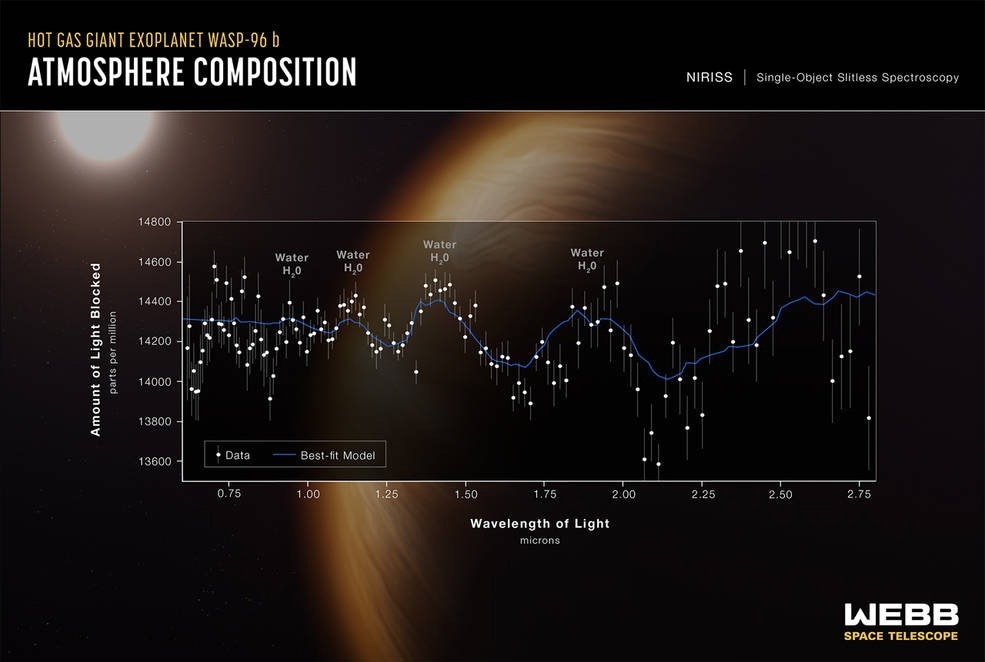
Image Credit: NASA, ESA, CSA, and STScI
On June 21 the JWST analyzed light shining through the atmosphere of the gas giant WASP-96b Near-Infrared Imager and Slitless Spectrograph (NIRISS) as it transited the face of its star.
The spectrum of light from the puffy planet with a mass half that of Jupiter but with a diameter that is 1.2 times greater than the solar system’s largest planet will be analyzed with spectroscopy as researchers attempt to assess its abundances of water vapor, carbon, and oxygen.
These highly-detailed observations will be replicated for a variety of exoplanets including other so-called “hot Jupiters,” ice giants, and rocky worlds like Earth. These investigations will not be sufficient to discover life but could point to telltale complex molecules that could be the result of biological processes.
A Stellar Life
Two of the images revealed by NASA captured during its initial period of operation demonstrate its ability to investigate stars and the processes happening to them at both the beginning and end stages of their lives.
The image the JWST captured of the Southern Ring Nebula shows a planetary nebula — an expanding cloud of material shed by a star as it when supernova at the end of its life.
By viewing this nebula in infrared, the JWST allows astronomers to see the “echo” of the supernova that initially blasts out visible light, gamma rays, and X-rays, as the material hits surrounding gas and dust, heating it and causing it to emit infrared radiation.
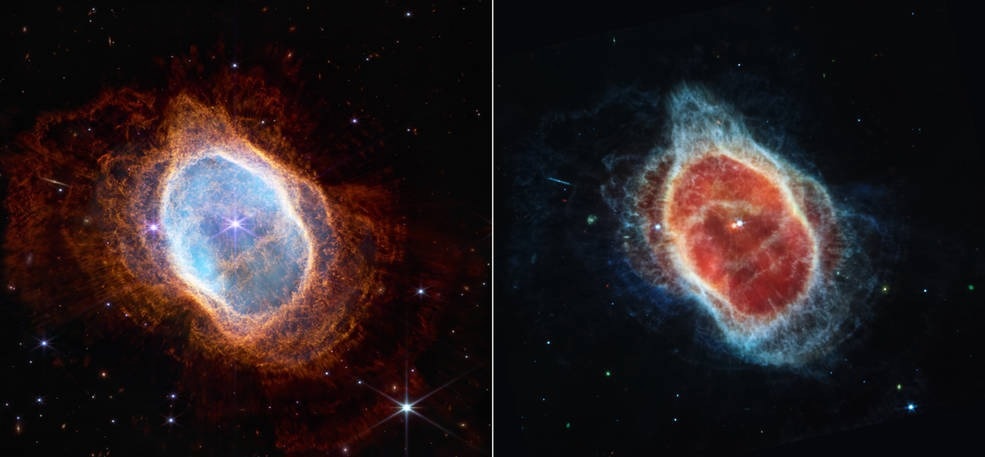
Image Credit: NASA, ESA, CSA, and STScI
At the other end of the timeline of stars, the JWST stared deep into the stars forming region NGC 3324 in the Carina Nebula, revealing deep within it infant stars that have never before been captured by observations made by Hubble. These newborn stars are hidden in visible light by the thick cold gas which collapses to form them.
Nicknamed the “cosmic cliffs” the images show the peaks and troughs of this nebula making it appear like craggy mountains — albeit one with peaks that stretch around 7 light years in height.

Image Credit: NASA, ESA, CSA, and STScI
Stephan’s Quintet
One of the JWST’s other initial images also represents its ability to reveal hidden details about star formation.
Stephan’s Quintet is a compact group of galaxies also known as the Hickson Compact Group 92 (HCG 92) located between 290 million and 40 million light-years from Earth. Within the image clusters of millions of young stars and regions of intense star formation are visible.
The image also reveals tails of gas, dust, and even stars, being ripped from the galaxies by their gravitational interactions. This is the most violent aspect of this image. One of the galaxies — NGC 7318B — is clearly seen bulldozing its way through the cluster, resulting in a brutal cosmic dance.
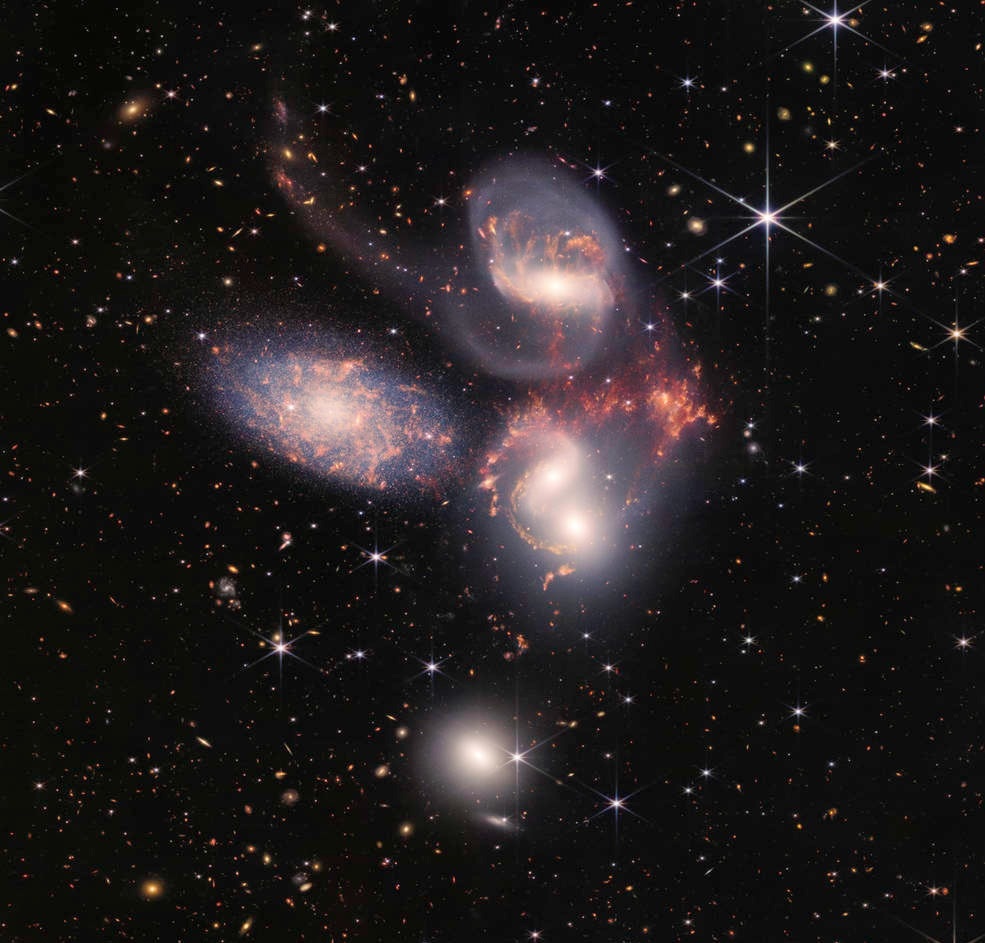
Image Credit: NASA, ESA, CSA, and STScI
The fact that these galaxies are relatively close means that using the JWST astrophysicists can study in detail the interactions that occur when galaxies collide and merge. They will also attempt to learn how these interactions affect the formation of stars in these tussling galaxies.
Astronomers will also use the telescope’s Mid-Infrared Instrument (MIRI) and NIRSpec to peer through the dust of one of the galaxies — NGC 739 — to view the supermassive black hole at its heart which is greedily consuming matter.
The picture of Stephan’s Quintet also represents its largest image to date, containing over 150 million pixels and constructed from almost 1,000 separate observations.
And Now Jupiter…
As if that wasn’t enough for the first week of the JWST’s science revelations, images have already leaked that represent its view of the solar system’s largest planet, the gas giant Jupiter.
By observing the fifth planet from the sun in astounding detail, the JWST demonstrates its utility closer to home.
References
¹ NASA’s Webb Delivers Deepest Infrared Image of Universe Yet, NASA, [https://www.nasa.gov/image-feature/goddard/2022/nasa-s-webb-delivers-deepest-infrared-image-of-universe-yet]
² NASA’s Webb Reveals Steamy Atmosphere of Distant Planet in Detail, NASA, [https://www.nasa.gov/image-feature/goddard/2022/nasa-s-webb-reveals-steamy-atmosphere-of-distant-planet-in-detail]
³ NASA’s Webb Captures Dying Star’s Final ‘Performance’ in Fine Detail, NASA, [https://www.nasa.gov/image-feature/goddard/2022/nasa-s-webb-captures-dying-star-s-final-performance-in-fine-detail]
⁴ NASA’s Webb Reveals Cosmic Cliffs, Glittering Landscape of Star Birth, NASA,[https://www.nasa.gov/image-feature/goddard/2022/nasa-s-webb-reveals-cosmic-cliffs-glittering-landscape-of-star-birth]
⁵ NASA’s Webb Sheds Light on Galaxy Evolution, Black Holes, NASA, [https://www.nasa.gov/image-feature/goddard/2022/nasa-s-webb-sheds-light-on-galaxy-evolution-black-holes]
Disclaimer: The views expressed here are those of the author expressed in their private capacity and do not necessarily represent the views of AZoM.com Limited T/A AZoNetwork the owner and operator of this website. This disclaimer forms part of the Terms and conditions of use of this website.